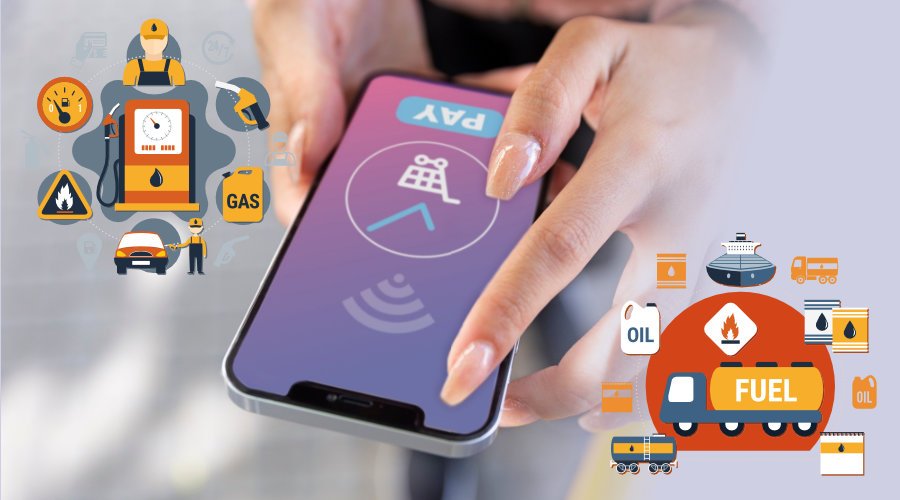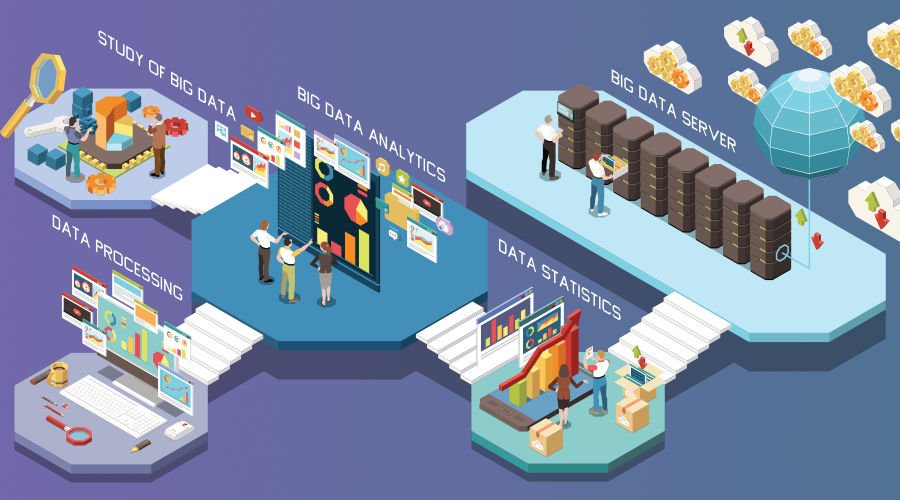
In the oil industry, the mobile fuel delivery market is growing steadily. According to market research, it’s expected to reach a 9.3 Billion value globally by 2032, serving passenger cars, hybrid and commercial vehicles. In such a vibrant market where synthetic fuel (biofuel, e-fuel, and solar fuel) is also moving its steps, fuel delivery businesses must stay competitive. In this article, you will discover how you can maintain a constant profit margin through a dynamic pricing strategy.
What’s Dynamic Pricing
Dynamic pricing consists of adjusting the price of a service or product in real-time based on supply in a specific region, cost of distribution, market demand, and other factors. A well-made pricing strategy can help your business maintain a constant profit margin.
Here are the four steps to implementing dynamic pricing.
- Data gathering. You must find and collect data on various factors that impact the price of oil (energy sources), such as the cost of production and distribution, market conditions, and competitors’ pricing.
- Data analysis. In this stage, you analyse the collected data to identify patterns and trends that will inform your pricing strategy. You will look for factors with a high impact on prices and how they change over time.
- Pricing rules setting. In this step, based on your analysis, you determine how your fuel delivery app will adjust prices in response to market changes. For example, if the demand is high or the cost of distribution rises, you can set a rule to increase the prices.
- Price monitoring and adjusting. For effectiveness, you need to check the market in real-time and make adjustments that guarantee constant profit and competitiveness.
Implementing an effective dynamic pricing strategy requires careful ongoing management—and a dedicated, skilled staff. But this is a must for a competitive price always aligned with market conditions.
Factors That Affect Profit Margins
Your oil/fuel distribution business can be successful and competitive if you know which elements contribute to your prices and profit. You must monitor, collect, and use these factors to calculate your price and margin. Here are the top seven.
- Cost of fuel. It varies depending on market conditions, supply, and demand.
- Transportation cost. It depends on the type of conveyance and distance to your customer.
- Operating expenses. They include salaries, rent and other costs of running your business.
- Customer acquisition costs. They tell you how much you spend to acquire a new client.
- Market demand. When the customer requests for fuel decrease, you should lower your prices to maintain the same sales volume.
- Competition. You must know your competitors’ prices as they determine your competitiveness. For example, if their price decreases, you may lower your price to retain your clients.
- Transaction fees. They are the commission you charge your customers on each transaction made through your app (or other services).
You must track this data continuously to adjust your pricing strategy and make informed business decisions for a healthy margin.
Data Sources for Dynamic Pricing Implementation
So, now you know data collection is essential for implementing a dynamic pricing strategy. Let’s see where you can find and extract them all.

a) General sources for any applications
- Government data. Many governments worldwide provide access to public data through their portals/websites. Some examples are data.gov.uk in the United Kingdom, data.gouv.fr in France, and data.gov in the USA.
- Social media APIs. Social networks such as Twitter, Instagram, and Facebook have APIs (Application Programming Interfaces, mechanisms that enable two software components to communicate with each other). These APIs allow you to extract comments, posts, tweets, direct messages, and other user-related data.
- Financial and business data providers. When you need data on stock prices, economic indicators or company financials, you can connect with sites such as Bloomberg, Morningstar, and Reuters.
- Academic and research databases. They consist of books, papers, and other scholarly materials. Some providers are Google Scholar, WorldCat, and JSTOR.
- Open data repositories. They provide information on various topics. You can find data on websites such as Google Dataset Search, Kaggle or Open Data Network.
- Internet of Things (IoT) devices. They offer you access to large amounts of data you can use for various applications. Some device examples are home appliances, voice assistance, smart pacemakers and monitoring systems, smart agriculture and farming sensors, surveillance robots, human-wearable biometrics, digital control systems, infrastructure sensors and management systems.
- Web scraping. It’s the process of extracting data from websites automatically and converting web resources into structured formats. You can use data scraping tools, engines, and languages such as Phyton, Scrapy, JavaScript, or other custom big-data query languages.
Disclaimer: before extracting any data, ensure you have the permission and legal right to access and use that data. Furthermore, make sure you respect privacy and data protection regulations.
b) Data sources for the Fuel Industry
- Energy Information Administration (EIA). The EIA is the U.S. government agency providing data and reports on oil production, imports, exports, consumption, and prices.
- Organization of the Petroleum Exporting Countries (OPEC). It coordinates and regulates the oil production and export by its member countries.
- International Energy Agency (IEA). The IEA is autonomous and based in Paris. It provides policy recommendations, analysis, and data on the global energy sector.
- Oil & Gas Journal, a leading global petroleum industry weekly publication that provides news and analysis on the gas and oil industry, data and statistics on oil prices, reserves, and production.
- Bloomberg Energy. Bloomberg L.P. is a privately held financial, software, media, and data company where you can access global news, analysis, and market data all in one place.
- Competitors in the oil/fuel distribution market. They can be divided into three categories.
- Local: they operate in the same region.
- National and global: represented by larger distribution companies.
- Online: they offer their products and services through e-commerce. Their online shops are effective sources of information to identify differentiating opportunities.
Reports and data on websites help you understand market trends (for example, data on oil production and consumption) and competitors’ conditions. Some sources have different levels of data availability and may require registration or subscription.
Your pricing is also influenced by other factors such as product quality, customer service, customer experience, and value-adds. This information informs you how your competitors are differentiating themselves. It also helps you identify business areas where you can improve your offering.
Note: during data gathering and analytics, avoid violating intellectual property, privacy, relevant local and international laws and regulations, antitrust laws, and price fixing practices.
How to Do Dynamic Pricing for Your Fuel Business
The three main activities you must undergo to make dynamic pricing possible are as follows.
- Extract up-to-date data from all the relevant sources. The market is dynamic, and so is data. An accurate decision is always based on updated information. This is especially true when it comes to pricing.
- Monitor market data and competitors’ pricing in real-time. You can use web crawlers or price comparison software.
- Analyse the collected data to identify patterns and trends. Some tools designed for this activity are Phyton or R.
You can do this manually using a ‘legion’ of workers, data scientists, and analysts. But this is time-consuming and expensive, and not in real-time.
You can use automated data extraction and monitoring tools to overcome this problem. They help you collect and monitor data automatically, instantly, and efficiently. This way, you can deal with big data and get alerts on price changes.
In the same way, you can use data analysis tools to inform your pricing strategy and understand how to adjust your prices and fees.
a) Benefits of Using Data Scraping Technology
Why should you use a data scraping service or tool? Here are the top five advantages.
- Time savings.
- Increased accuracy by minimising human errors during big and complex data set extraction.
- Data extraction from multiple sources. An automated tool based on cloud computing and a fast extraction engine can run multiple jobs simultaneously, dealing with various sources such as websites, reports, PDFs, intranet, etc.
- Real-time operations. The activity is executed by bots and scripts that access the most up-to-date data available in a fraction of a time.
- Scalability. You can adjust the extraction activity based on your needs by reducing or increasing the computational power of the underneath network.
So, you need a flexible and scalable ETL (Extract, Transform Load) system designed to handle multiple data sources and the following elements.
- Data format (it handles different formats and converts them into a standardised one for processing and analysis).
- Data volume (it manages small and big data sets being able to scale up and down).
- Quality (it includes data quality checks to identify and correct errors, inconsistencies or missing data).
- Integration (it takes data about different aspects and integrates all the information to create a comprehensive view).
- Data updates (it processes data promptly with a periodic frequency or in real-time).
A multi-source ETL data system helps you create more robust and comprehensive data sets. This is essential to inform your dynamic pricing strategy in any industry, including the oil distribution and on-demand fuel delivery industry.

b) How to calculate a successful fee (your revenue)
Would you like to operate a successful fuel distribution business? You can use deep learning models to analyse large amounts of data and identify patterns and trends not spotted by humans. Then, you must calculate a fee that can keep your margin constant.
This way, you can adjust your fee dynamically and optimise your revenue for a consistent margin.
i) Deep-Learning Models
Here are the steps to train a deep-learning model on historical data.
- Objective definition. You identify the key metrics to optimise, such as revenue, margin or market share.
- Data gathering. You follow the recommendations discussed above.
- Data cleaning and processing. You must ensure your data is consistent and accurate (filling in missing data, removing outliers, transforming data into supported formats).
- Model training. You may need to experiment with different model architectures and hyperparameters. You will base the training on historical data to identify patterns and trends.
- Testing and validation. You verify if your deep learning model predicts the outcome accurately. Otherwise, you will need to adjust the model or training data.
- Model implementation. You can finally use your model to adjust your fee dynamically based on the latest market data. This model will be integrated into your ETL process and pricing strategy.
ii) Best fee calculation strategy
You can determine the fee for a steady margin by monitoring and analysing all the cost factors and competitors’ prices (and their changes over time).
Through the steps below, you can develop an effective fee calculation strategy that can keep your profit margin at an absolute value compared to costs.
- Costs and price monitoring (see the paragraphs above).
- Data analysis. For example, you may identify a correlation between competitors’ pricing and oil prices.
- Pricing strategy development. Your strategy must consider your costs and the prices of the competition. Here, you will use a formula incorporating the latest market data and your desired margin.
- Strategy test and validation on a separate set of data.
- Pricing strategy implementation. In this final step, you implement your validated pricing strategy in your app to adjust the fee dynamically.
Deep learning models, real-time monitoring, and dynamic pricing implementation are complex activities and require significant computational resources and advanced skills. Therefore, remember that before starting your model training and fee calculation or choosing the right IT company that will design your dynamic pricing solution.
As a big-data IT company, WebRobot can integrate its platform and service technology into vertical applications like, for example, on-demand fuel delivery apps to serve consumers, businesses, and retailers worldwide.
In the next blog, we will talk more about this upcoming app that can reduce costs, protect the environment, and improve access to fuel. So, subscribe to our newsletter and stay tuned.

Stay Updated With Our Newsletter
Credits: Featured Images by macrovector and Freepik

















[…] Data mining also helps your company track the most popular products and services for your customers. That way, you can tailor your offerings as needed, do product matching, monitor your competitors, and automatically execute dynamic pricing strategies. […]
[…] Dynamic pricing consists of adjusting prices based on various factors, such as demand, supply, competitor pricing, and market trends. It helps you optimise your pricing strategies to attract customers and boost sales. Again, web scraping provides valuable data to inform dynamic pricing models. […]
[…] monitoring: Monitor the prices of products and services on different websites and automatically generate reports and […]
[…] mining are becoming the only way to remain competitive and flexible through price monitoring and dynamic pricing strategies. In a previous blog, we talked about pricing intelligence and how to analyse competitor […]
[…] in the hospitality and tourism industry. It allows market trends monitoring, competitor analysis, pricing strategy optimisation, inventory management, customer experience improvement, marketing campaign enhancement, and […]
[…] collected and analysed data allows fuel efficiency and better safety for delivery services and on-demand divers. TomTom traffic data sets are […]
[…] yet profitable offerings. Data analytics allows you to set ticket fares in real-time by employing dynamic pricing models that analyse factors such as demand, seat availability, booking patterns, and competitor […]
[…] compare options, and make informed decisions about their transportation choices or marketing and pricing strategy. It streamlines the data-gathering process from multiple sources, saving time and effort while […]